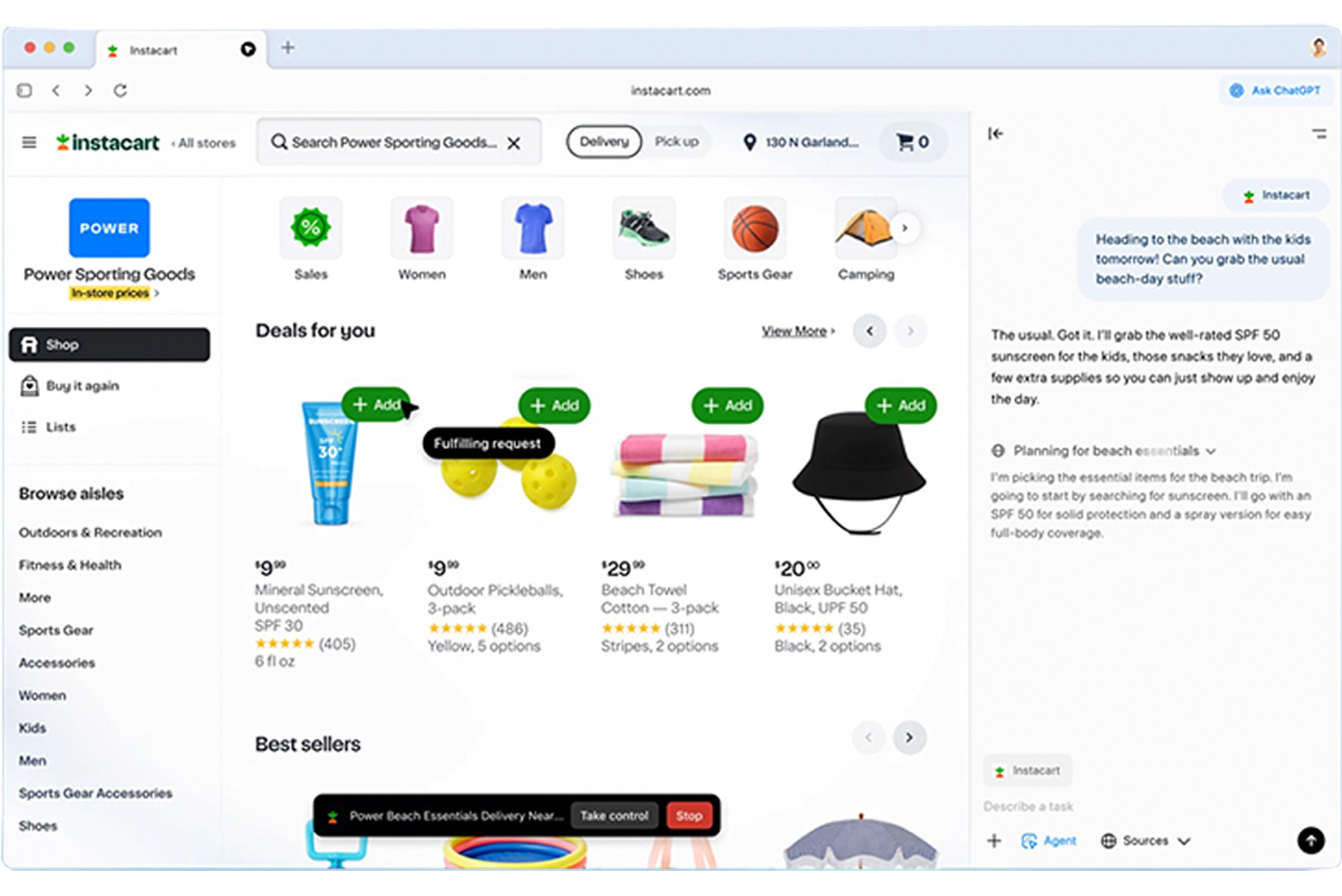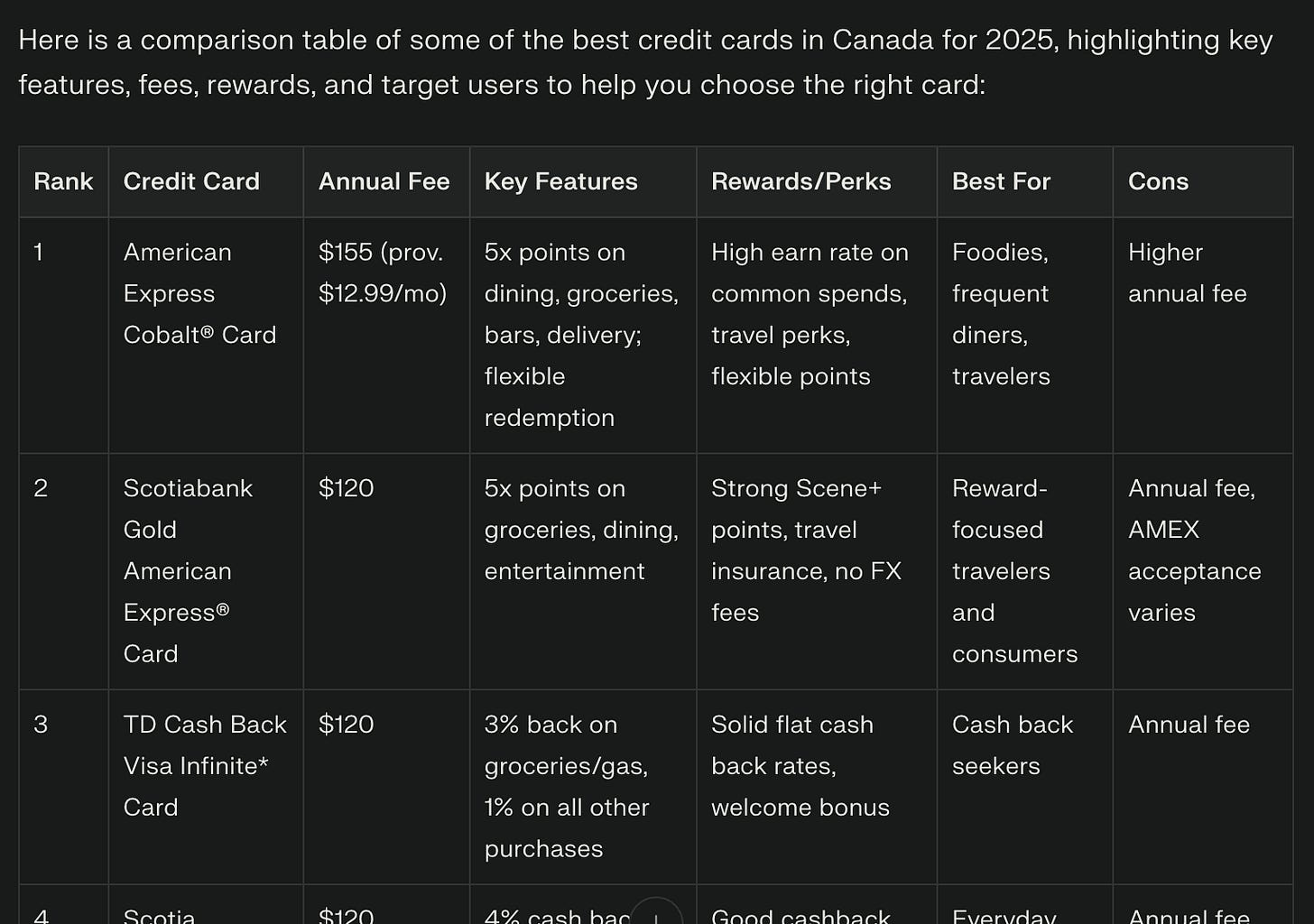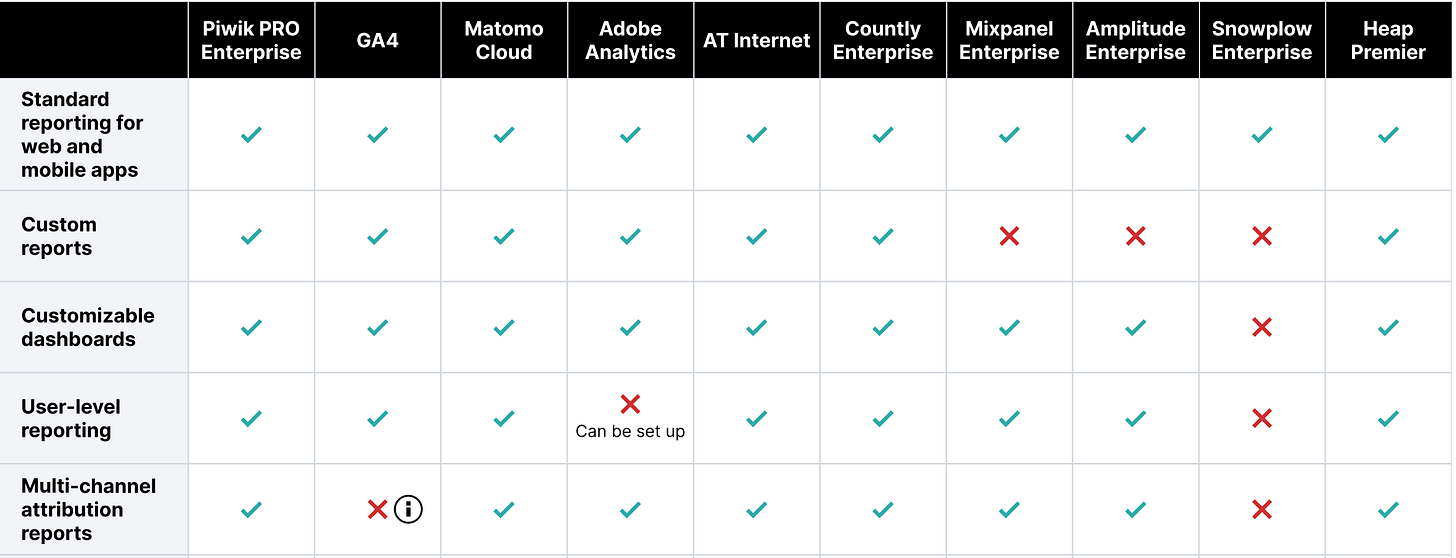In my analysis from last month, publisher traffic is down 51% since 2023, and forums are down 35% (excluding Reddit). That is a massive shift from users getting answers on websites to getting answers from AI.
Now, OpenAI has launched the ChatGPT Atlas browser, built on Chromium with ChatGPT integrated directly into the browsing experience. This comes right after Perplexity released its own free version of Comet.
Two AI browsers in a month! Here is what that means for marketing, advertising, and SEO, and what smart marketers can do about it.
Insight 1: Marketing in a World Without Clicks
How this changes things
AI browsers are transforming how people discover and act. The path is no longer “type, scroll, click.” It is “ask, answer, done.”
Instead of sending users to your site, the AI pulls your content into its answer layer. That means fewer pageviews, less ad space, and weaker attribution models.
I no longer need to visit Ratehub for the best mortgage rates or Credit Card Genius for a list of the best credit card products.
Side note: There is no obligation for AI to be compliant with with regulation. In the example above you can see the credit card fee displayed without the APR, contrary to financial regulation.
There is opportunity in this shift. Users arriving through AI overviews are closer to conversion. They already understand the context and are ready to take action.
Research also shows a strong correlation between brand presence on highly linked pages and AI visibility. Google’s AI Overviews heavily favour content from widely cited pages. Other AI systems show weaker but measurable relationships between link authority and visibility.
How marketers should adapt
Add conversion points to AI-cited pages.
If your page is being referenced by AI (you should know which ones are), make conversion frictionless. Add quote buttons, calculators, or short forms near the cited content. AI browsers can help users convert to ensure the user is already primed to act.Invest in PR and brand advertising.
Build your brand presence on authoritative, high-link pages. PR is no longer just for reputation. It directly improves AI visibility.Write content worth quoting.
Use concise headings and clear answers. Make it easy for AI systems to extract accurate, credible insights.Capture first-party data early.
Prioritize email, SMS, and push opt-ins before the AI layer interrupts your funnel. Once users get their answers from AI, you may never see them.
Insight 2: Attribution and Analytics Are About to Break
How this changes things
As AI browsers gain adoption, analytics will start to lose accuracy. Users will interact with your brand through AI summaries or sidebars, not through your site.
Expect rising “Direct” traffic, fewer referral paths, and incomplete attribution. You will see leads and conversions, but not know where they originated.
How marketers should adapt
Shift from click attribution to visibility attribution.
Start tracking mentions, citations, and inclusion in AI-generated content. Visibility will matter more than it has in the past.Use micro-engagements to capture intent.
Embed calculators, tools, or small forms that capture leads before users leave, building an owned audience is more critical than ever.Redefine success metrics.
Your multi-channel tracking tools must now include AI visibility and brand mentions. Measure inclusion, not just traffic. Track how often your brand appears in AI answers, summaries, and citations across platforms. Ask, “Where and how is my brand being surfaced by AI?” instead of “How many people visited this page?”
Insight 3: The New Ad Frontier Is AI Context
How this changes things
Ad inventory always follows attention. As AI browsers become the main interface, the new ad space will live inside AI answer panels and sidebar summaries.
This means context-based targeting will replace keyword targeting. Brands will pay to appear as trusted sources or recommended answers inside the AI experience.
How marketers should adapt
Be early on AI placement ads.
When OpenAI and Perplexity open ad APIs, test them early. Almost with exception, early adopters will get cheap visibility before the rest catch up.Write conversational ad copy.
Ads will need to sound like natural, helpful responses. Write as if your brand is answering a question, not shouting a tagline.Strengthen authority signals.
AI platforms rank trusted brands higher. Build backlinks, publish verified data, and display credentials to improve authority in both human and AI ecosystems.
The Bottom Line
Atlas and Comet mark a shift from click-driven discovery to answer-driven decision-making.
Search engines indexed your content.
AI browsers interpret it.
You now need to teach the machine to trust you and make it effortless for users to act once they find you.
The marketers who adapt to this will capture high-intent, low-friction leads. The rest will keep refreshing dashboards, wondering where their clicks went.






